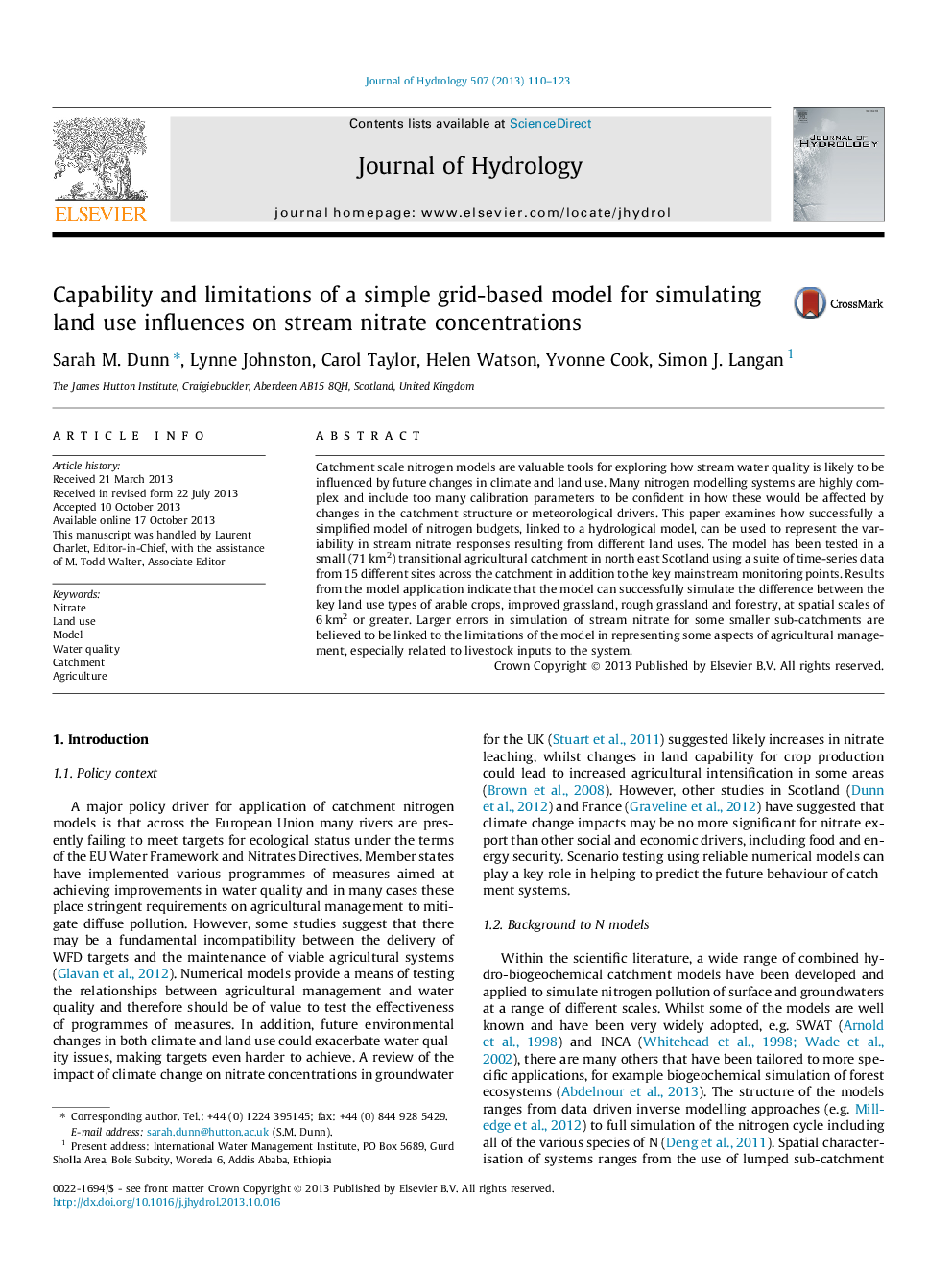| Article ID | Journal | Published Year | Pages | File Type |
|---|---|---|---|---|
| 4576125 | Journal of Hydrology | 2013 | 14 Pages |
Abstract
Catchment scale nitrogen models are valuable tools for exploring how stream water quality is likely to be influenced by future changes in climate and land use. Many nitrogen modelling systems are highly complex and include too many calibration parameters to be confident in how these would be affected by changes in the catchment structure or meteorological drivers. This paper examines how successfully a simplified model of nitrogen budgets, linked to a hydrological model, can be used to represent the variability in stream nitrate responses resulting from different land uses. The model has been tested in a small (71Â km2) transitional agricultural catchment in north east Scotland using a suite of time-series data from 15 different sites across the catchment in addition to the key mainstream monitoring points. Results from the model application indicate that the model can successfully simulate the difference between the key land use types of arable crops, improved grassland, rough grassland and forestry, at spatial scales of 6Â km2 or greater. Larger errors in simulation of stream nitrate for some smaller sub-catchments are believed to be linked to the limitations of the model in representing some aspects of agricultural management, especially related to livestock inputs to the system.
Related Topics
Physical Sciences and Engineering
Earth and Planetary Sciences
Earth-Surface Processes
Authors
Sarah M. Dunn, Lynne Johnston, Carol Taylor, Helen Watson, Yvonne Cook, Simon J. Langan,
